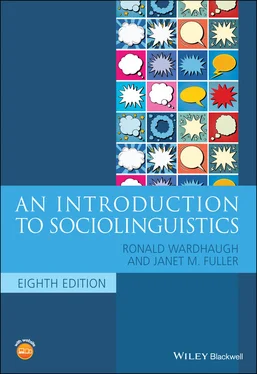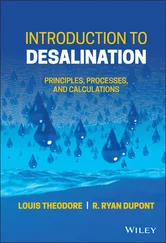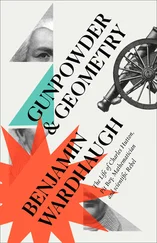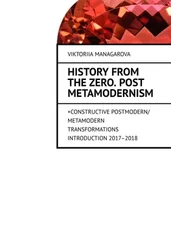12 Coulmas, F. (1999). The Far East. In J. A. Fishman (ed.), Handbook of Language and Ethnic Identity. Oxford: Oxford University Press.
13 Crowley, T. (2003). Standard English and the Politics of Language. London: Palgrave.
14 Cukor‐Avila, Patricia (1997). Change and stability in the use of verbal ‐s over time in AAVE. In Englishes Around the World I. Amsterdam: John Benjamins, 295–306.
15 Cutler, C. (2008). Brooklyn style: Hip‐hop markers and racial affiliation among European immigrants in New York City. International Journal of Bilingualism 12(1–2): 7–24.
16 Cutler, C. (2010). Hip‐hop, White immigrant youth, and African American Vernacular English: Accommodation as an identity choice. Journal of English Linguistics 38(3): 248–269.
17 Davison, P. (2012). The language of internet memes. In Michael Mandiberg (ed.), The Social Media Reader. New York: New York University Press, 120–134.
18 DeBose, C. E. (2015). African American church language. In Sonja L. Lanehart (ed.), The Oxford Handbook of African American Language. New York: Oxford University Press, 677–690.
19 Dillard, J. L. (1972). Black English: Its History and Usage in the United States. New York: Random House.
20 Dollinger, S. (2019). The Pluricentricity Debate: On Austrian German and Other Germanic Standard Varieties. London: Routledge.
21 Engel, M. (2017). That’s the Way it Crumbles: The American Conquest of the English Language. London: Profile Books.
22 Fairclough, N. (1992). Discourse and text: Linguistic and intertextual analysis within discourse analysis. Discourse & Society 3(2): 193–217.
23 Gardner‐Chloros, P. (2013). Strasbourg revisited: C’est chic de parler français. International Journal of the Sociology of Language 224: 143–177.
24 Germanos, M. A. and C. Miller (2015). Is religious affiliation a key factor of language variation in Arabic‐speaking countries? Language & Communication 42: 86–98.
25 Glück, H. (2017). Sachtemang mit dit Kiezdeutsche. Studia Germanica Gedanensia 37: 31–34.
26 Gooskens, C. (2007). The contribution of linguistic factors to the intelligibility of closely related languages. Journal of Multilingual and Multicultural Development 28(6): 445–467.
27 Gooskens, C. (2018). Dialect intelligibility. In Charles Boberg, John Nerbonne, and Dominic Watt (eds.), The Handbook of Dialectology. Hoboken, NJ: John Wiley & Sons, Inc., 204–218.
28 Harrington, J., S. Palethorpe, and C. I. Watson (2000). Does the Queen speak the Queen’s English? Nature 408: 927–928.
29 Haugen, E. (1966). Dialect, language, nation. American Anthropologist 68: 922–935. In J. B. Pride and J. Holmes (1972), Sociolinguistics: Selected Readings. Harmondsworth: Penguin Books.
30 Hazen, K. (2002). Identity and language variation in a rural community. Language 78(2): 240–257.
31 Heeringa, W. and J. Nerbonne (2001). Dialect areas and dialect continua. Language Variation and Change 13: 375–400.
32 Heller, M. (2010). The commodification of language. Annual Review of Anthropology 39: 101–114.
33 Hinton, L. N. and K. E. Pollock (2000). Regional variations in the phonological characteristics of African American Vernacular English. World Englishes 19(1): 59–71.
34 Huntington, H. E. (2013). Subversive memes: Internet memes as a form of visual rhetoric. AoIR Selected Papers of Internet Research 3.
35 Ilbury, C. (2020). ‘Sassy Queens’: Stylistic orthographic variation in Twitter and the enregisterment of AAVE. Journal of Sociolinguistics 24(2): 245–264.
36 Jannedy, S. (2010). The usage and distribution of So in spontaneous Berlin Kiezdeutsch. ZAS Papers in Linguistics 52: 43–62.
37 Jaspers, J. (2008). Problematizing ethnolects: Naming linguistic practices in an Antwerp secondary school. International Journal of Bilingualism 12(1–2): 85–103.
38 Jaspers, J. and L. M. Madsen (2019). Fixity and fluidity in sociolinguistic theory and practice. In J. Jaspers and L. M. Madsen (eds.), Critical Perspectives on Linguistic Fixity and Fluidity: Languagised Lives. New York: Routledge.
39 Johnstone, B. (2016). Enregisterment: How linguistic items become linked with ways of speaking. Language and Linguistics Compass 10(11): 632–643.
40 Johnstone, B., J. Andrus, and A. E. Danielson (2006). Mobility, indexicality, and the enregisterment of ‘Pittsburghese’. Journal of English Linguistics 34(2): 77–104.
41 Jones, T. (2015). Toward a description of African American Vernacular English dialect regions using ‘Black Twitter’. American Speech 90(4): 403–440.
42 Jordan, P. (2018). Languages and space‐related identity: The rise and fall of Serbo‐Croatian. In Stanley D. Brunn and Roland Kehrein (eds.), Handbook of the Changing World Language Map. Cham: Springer, 1–21.
43 Kallmeyer, Werner and Inken Keim (2003). Linguistic variation and the construction of social identity in a German‐Turkish setting. In J. K. Androutsopoulos and A. Georgakopoulou (eds.), Discourse Constructions of Youth Identities. Pragmatics & Beyond, vol. 110. Amsterdam: John Benjamins, 29–36.
44 Kaye, A. S. (2001). Diglossia: The state of the art. International Journal of the Sociology of Language 152: 117–130.
45 Keim, I. (1978). Gastarbeiterdeutsch: Untersuchungen zum sprachlichen Verhalten türkischer Gastarbeiter: Pilotstudie, vol. 41. TBL Verlag Narr.
46 King, R. D. (2001). The poisonous potency of script: Hindi and Urdu. International Journal of the Sociology of Language 150: 43–60.
47 Kopp, A. (1999). The Phonology of Pennsylvania German English as Evidence of Language Maintenance and Shift. Selinsgrove: Susquehanna University Press.
48 Kurath, H. (1949). A Word Geography of the Eastern United States. Ann Arbor: University of Michigan Press.
49 Kurpaska, M. (2010). Chinese Languages(s): A Look through the Prism of the Great Dictionary of Modern Chinese Dialects. Berlin: De Gruyter.
50 Labov, W. (1969). Contraction, deletion, and inherent variability of the English copula. Language 45: 715–762.
51 Labov, W. (1972). Language in the Inner City: Studies in the Black English Vernacular. Philadelphia: University of Pennsylvania Press.
52 Laineste, L. and P. Voolaid (2017). Laughing across borders: Intertextuality of internet memes. European Journal of Humour Research 4(4): 26–49.
53 Lee, D. Y. (2001). Genres, registers, text types, domains and styles: Clarifying the concepts and navigating a path through the BNC jungle. Language Learning and Technology 5(3): 37–72.
54 Leppänen, S., S. Kytölä, H, Jousmäki, S. Peuronen, and E. Westinen (2014). Entextualization and resemiotization as resources for identification in social media. In P. Seargeant and C. Tagg (eds.), The Language of Social Media: Identity and Community on the Internet. Basingstoke: Palgrave Macmillan, 112–136.
55 Linnes, K. (1998). Middle‐class AAVE versus middle‐class bilingualism: Contrasting speech communities. American Speech 73(4): 339–367.
56 Lippi‐Green, Rosina (2012). English with an Accent: Language, Ideology and Discrimination in the United States. 2nd edn. New York: Routledge.
57 Mallikarjun, B. (2002). Mother tongues of India according to the 1961 census. Language in India, 2(5). http://www.languageinindia.com/aug2002/indianmothertongues1961aug2002.html?source=post_page‐‐‐‐‐‐‐‐‐‐‐‐‐‐‐‐‐‐‐‐‐‐‐‐‐‐‐, accessed January 20, 2020.
58 Matsuda, M. J. (1991). Voice of America: Accent, antidiscrimination law, and a jurisprudence for the last reconstruction. Yale Law Journal 100: 1329–1407.
59 McDavid, R. I. (1965). American social dialects. College English 26: 254–260.
60 Milroy, J. (2001). Language ideologies and the consequences of standardization. Journal of Sociolinguistics 5(4): 530–555.
Читать дальше




![Andrew Radford - Linguistics An Introduction [Second Edition]](/books/397851/andrew-radford-linguistics-an-introduction-second-thumb.webp)







